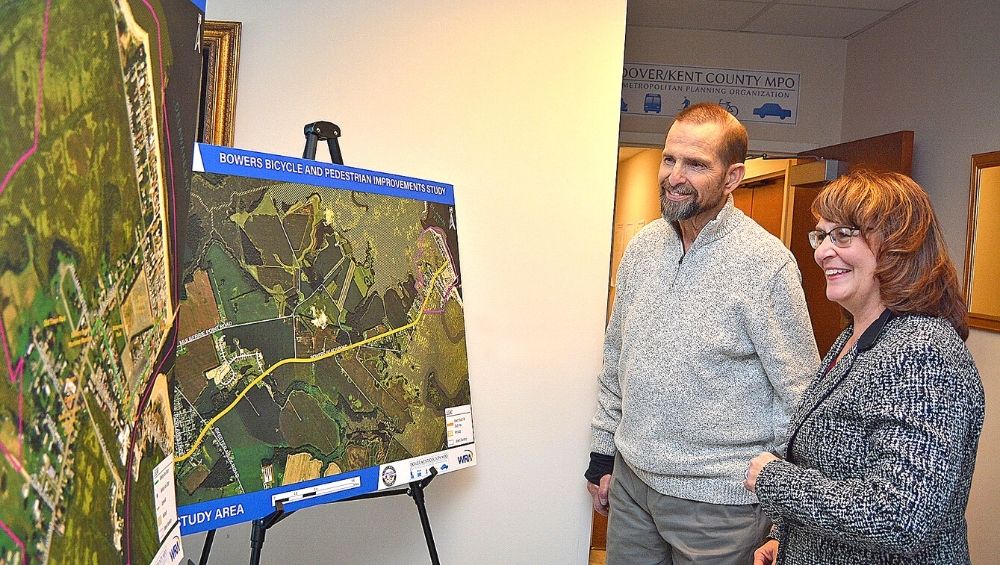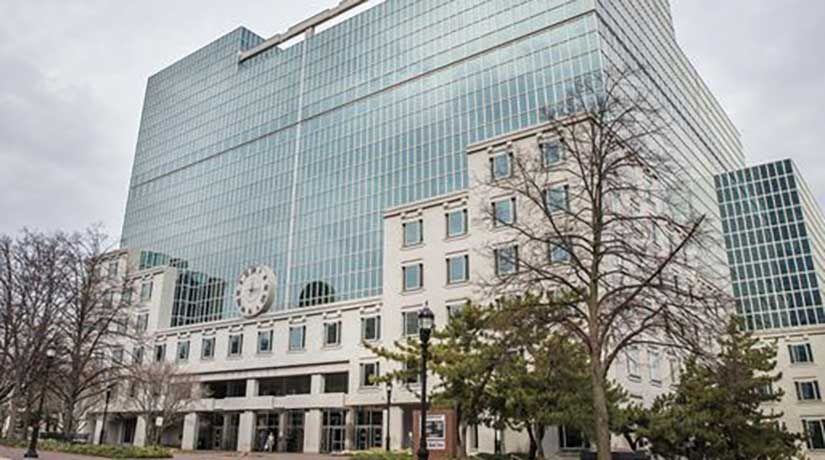Avelo to Open New East Coast Base in Delaware
HELLO, AVELO! Avelo Airlines Announces New East Coast Base In Wilmington, Delaware
20 October, 2022

Avelo debuts five Florida destinations from the Delaware Valley region Introductory one-way fares start at $49
WILMINGTON, Del. — Avelo Airlines announced today that it will open the airline’s fourth base at Wilmington Airport (ILG) next February. The new base will unlock a new era of affordable, convenient and reliable air service for the Delaware Valley, encompassing portions of four states, including Delaware, Southeastern Pennsylvania / Philadelphia, South Jersey and the northern Eastern Shore of Maryland.
Avelo will initially serve five popular nonstop Florida destinations from its new east coast base in Delaware at ILG: Fort Lauderdale, Fort Myers, Orlando, Tampa and West Palm Beach. Very low introductory one-way fares starting at $49* are available at AveloAir.com.
Avelo Airlines Founder, Chairman and CEO Andrew Levy said, “The Delaware Valley region wants and deserves more affordable, convenient and reliable air travel. Avelo was founded with a simple purpose – to Inspire Travel. Our very low fares and nonstop flights to five sun-soaked Florida destinations coupled with the fast and seamless experience at Wilmington Airport will make traveling easier than ever. We appreciate the warm reception and support Avelo is receiving from Delaware Governor John Carney, New Castle County Executive Matt Meyer and so many other government and business leaders here. We look forward to welcoming everyone aboard Avelo’s first ILG flight in February.”
Delaware Governor John Carney said, “We’ve made significant infrastructure investments across our state, and we’re pleased to have Avelo join us here in Delaware. Avelo will provide Delawareans and visitors a convenient way to travel. Thank you to Avelo for choosing Delaware.”
New Castle County Executive Matt Meyer said, “Wilmington Airport has tremendous potential to be an economic driver in our County. We welcome Avelo to our community to provide reliable and fast service to our residents and look forward to further growth opportunities.”
Delaware River & Bay Authority Executive Director Thomas J. Cook said, “Wilmington Airport’s excellent location along the busy I-95 corridor, along with the lowest cost operating environment of any airport in the United States, offer customers the opportunity to forego the stress, expense and hassles of a big city airport. Avelo Airlines also recognizes the benefits that Wilmington Airport offers and is looking to be part of our community. It’s a great day for Delaware and more importantly, for travelers who are looking for affordable, convenient commercial air service options.”
Five Fun-in-the-Sun Nonstop Florida Destinations from New East Coast Base in Delaware
Beginning February 1, 2023, Avelo will serve five nonstop Florida destinations from ILG:
Fort Lauderdale (FLL): A South Florida Haven
The reasons to visit Fort Lauderdale are as abundant as the sun and palm trees. There are over 300 sunny days a year, which gives visitors plenty of opportunities to enjoy nature, boating, diverse neighborhoods, events, attractions and unique “only-here” specialness that helps define Fort Lauderdale. With 24 miles of golden sandy beaches paired with waterfront dining and shopping, it’s easy to spend a day at the beach. With comfortable year-round temperatures, the Atlantic Ocean is always inviting to scuba divers, snorkelers, stand-up paddle boarders and jet skiers. The destination also boasts luxury hotels, museums, nightlife, shopping, casinos and family-friendly fun.
Fort Myers (RSW): Immerse Yourself in the Beauty of Florida’s Southwest Gulf Coast
Nestled along Southwest Florida’s clear turquoise Gulf Coast waters is the town of Fort Myers. Good days come naturally here with Fort Myers’ secluded white sand beaches and relaxing waterfront resorts that nurture a sense of casual sophistication. Visitors can sway from shopping Fort Myers’ charming boutiques, to indulging in world-class dining, to enjoying a barefoot sunset stroll on the beach. It’s been well over a century since Thomas Edison settled in “The City of Palms” — yet the community still generates an exciting energy that attracts visitors from around the world. Fort Myers promises endless ways to enjoy a romantic getaway or an activity-packed fun-in-the-sun family retreat.
Orlando (MCO): The Theme Park Capital of the World
Endless excitement and unforgettable adventures are just minutes away for Avelo Customers arriving at Orlando’s most convenient airport – Orlando International Airport. Whether it’s a trip for families, couples, single travelers or a group of friends, Orlando is the perfect destination that ensures a memorable vacation filled with unique experiences for every visitor. While Orlando is known as the Theme Park Capital of the World for its incredible parks and attractions, there’s so much more to enjoy. The destination is also home to sizzling nightlife and a vibrant entertainment scene, craft breweries, wineries, professional sports teams and so much more.
Tampa (TPA): The Heart of Florida’s Gulf Coast
When it comes to Tampa Bay, picturesque scenery and year-round sunshine create an ideal setting for those ready to explore and discover new treasures. With some of the world’s top-rated beaches, Tampa is a year-round haven for outdoor enthusiasts. Visitors can discover blue skies and sunshine, a sparkling waterfront, world-class chefs, family fun and a century of Cuban culture – all in one of Florida’s most diverse travel destinations.
West Palm Beach (PBI): White Sand, Turquoise Water and So Much More
The Palm Beaches are home to legendary coastline, shopping and entertainment. The area’s iconic restaurants, glitzy nightlife and unapologetically luxurious resorts attract sunseekers from across the globe. Lined with stately palm trees, this South Florida paradise is a vacationer’s nirvana. With miles of world-famous white sand beaches and turquoise water, there is a spot on this majestic Atlantic coastline for every mood and interest.
Avelo ILG Flight Schedule
Orlando (MCO)
Special Inaugural Flight Wednesday, February 1, 2023
Effective February 3, 2023 – Mondays, Fridays and Saturdays
Fort Lauderdale (FLL)
Effective February 2, 2023 – Thursdays and Sundays
Tampa (TPA)
Effective February 2, 2023 – Thursdays and Sundays
Fort Myers (RSW)
Effective February 3, 2023 – Mondays and Fridays
West Palm Beach (PBI)
Effective February 4, 2023 – Wednesday and Saturdays
ILG — The Delaware Valley’s Ultra-Convenient Airport
Wilmington Airport offers a refreshingly smooth, simple and friendly alternative hometown airport experience. ILG’s adjacency to multiple major highways make it the Delaware Valley’s most convenient and travel-friendly airport.
Avelo will initially base one Boeing Next-Generation (NG) 737 at ILG. Avelo currently operates 11 737 NG aircraft. The airline expects to have 14 737s by the end of 2022 and 16 aircraft operating across its nationwide network by the end of next March.
Over time, Avelo expects to serve hundreds of thousands of Customers at ILG. To support its ILG base, the airline will initially create at least 35 jobs. These positions will include a combination of Avelo Crewmembers and jobs with Avelo business partners operating at ILG. Roles will include Airport Customer Service, Flight Attendants, Pilots, Aircraft Technical Operations and Maintenance, and Supervisors. Candidates can learn more about Avelo career opportunities by visiting AveloAir.com/Careers.
As a new airline, Avelo is an excellent opportunity for individuals at all stages of their career to join a successful and fast-growing company. Avelo offers competitive compensation, comprehensive healthcare coverage, a company-matching 401K retirement program and free space available air travel on Avelo, among many other benefits. Additionally, Avelo Crewmembers have access to Avelo University, which offers job-readiness training and ongoing career development courses. Grounded in the airline’s One Crew Value, Avelo offers an inclusive, collaborative and caring culture.
ILG will be Avelo’s fourth base. The airline currently operates bases at Los Angeles’ Hollywood Burbank Airport (BUR), Southern Connecticut’s Tweed-New Haven Airport (HVN) and Orlando International Airport (MCO). Avelo has postponed previously announced plans to open a base at Fort Myers’ Southwest Florida International Airport (RSW) due to a significant reduction in travel demand resulting from Hurricane Ian. However, Avelo continues to operate flights between RSW and HVN and will begin operating flights between RSW and ILG in February.
America’s Affordable and Convenient Airline
Avelo was founded with a vision to help its Customers save money and time. Since taking flight on April 28, 2021, Avelo has flown more than 1.2 million Customers on over 10,000 flights.
In addition to offering Customers everyday low fares on every route, Avelo Customers can always change or cancel their itineraries with no extra fees. Avelo also offers several unbundled travel-enhancing options that give Customers the flexibility to pay for what they value, including priority boarding, checked bags, carry-on overhead bags, and bringing a pet in the cabin.
Additionally, the American-made Boeing 737 jets Avelo flies offer a more spacious and comfortable experience than the small regional aircraft currently operating at most of the airports Avelo serves. Customers who value an advance seat assignment can choose from several modestly priced seating options, including seats with extra legroom, as well as pre-reserved window and aisle seating. One-third of seats on Avelo aircraft are available for Customers who appreciate the comfort of extra legroom.
With the addition of ILG, Avelo serves 32 destinations across the U.S. The airline has brought more convenience, choice and competition in air travel by flying unserved routes to primarily underserved communities across the country. At least one airport on every Avelo flight is a small hometown airport – making every Avelo journey easier and more enjoyable.
At Avelo, every flight is also nonstop. This connection-free travel experience not only provides Avelo Customers with a faster and simpler travel experience but also minimizes delays, cancellations and lost bags. In fact, Avelo has established itself as one of America’s most reliable airlines with a year-to-date flight cancellation rate of 1% and an industry-leading year-to-date checked bag handling performance of 1.9 mishandled bags per 1,000 checked bags.
Avelo is distinguished by its Soul of Service culture. The culture is grounded in Avelo’s One Crew Value which promotes a welcoming and caring experience. By caring for one another and owning their commitments, Avelo Crewmembers focus on anticipating and understanding Customer needs on the ground and in the air.
About Avelo Airlines
Avelo Airlines was founded with a simple purpose — to Inspire Travel. The airline offers Customers time and money-saving convenience, low everyday fares, and a refreshingly smooth and caring experience through its Soul of Service culture. Operating a fleet of Boeing Next-Generation 737 aircraft, Avelo serves 32 popular destinations across the U.S., including its four bases at Los Angeles’ Hollywood Burbank Airport (BUR), Southern Connecticut’s Tweed-New Haven Airport (HVN), Orlando International Airport (MCO) and the Delaware Valley’s Wilmington Airport (ILG). For more information visit AveloAir.com or the Avelo Newsroom at AveloAir.com/Newsroom.
About the Delaware River and Bay Authority
The DRBA, a bi-state governmental agency created by Compact in 1962, owns and operates the Delaware Memorial Bridge, the Cape May-Lewes Ferry, and the Forts Ferry Crossing. The DRBA also manages corporate and aviation properties through its economic development powers – two airports in New Jersey (Millville Airport and Cape May Airport) and three in Delaware (Wilmington Airport, Civil Air Terminal and Delaware Airpark). All DRBA operating revenues are generated through the bridge, ferry and airport facilities. For more information, visit www.drba.net.
This article was originally posted on the Delaware River & Bay Authority website at: https://www.drba.net/hello-avelo-avelo-airlines-announces-new-east-coast-base-wilmington-delaware
Newsletter Sign Up
Stay Up To Date With Delaware


















